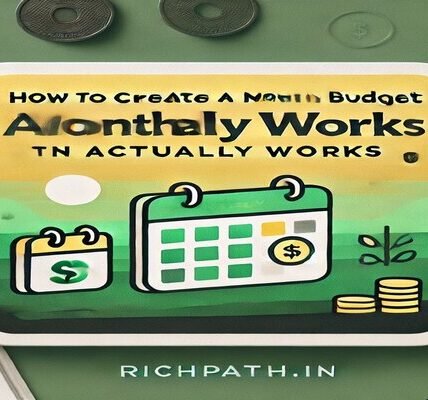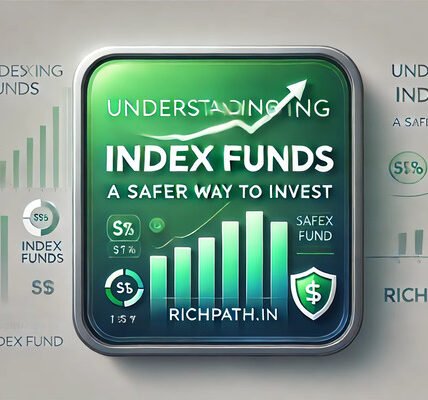Money Fasting: How One No-Spend Day a Month Can Build a Wealth Corpus Over 20 Years

In a world filled with financial temptations, maintaining discipline in spending can feel overwhelming. But what if you could transform a simple habit into a significant wealth-building opportunity? Enter the concept of Money Fasting—a single day each month where you commit to spending nothing.
This practice not only fosters mindful spending but, when combined with disciplined investing, can result in a substantial corpus over the years. In this article, we explore the concept of Money Fasting, its benefits, and how saving and investing the money you don’t spend can grow into a wealth-generating portfolio.
What is Money Fasting?
Money Fasting involves designating one day every month as a “No-Spend Day.” On this day, you avoid all discretionary spending and limit expenses to absolute essentials like utilities or emergencies.
The Objective
The goal of Money Fasting isn’t deprivation—it’s about developing financial awareness, breaking unnecessary spending habits, and redirecting savings toward wealth creation.
Why Choose Money Fasting?
1. Builds Financial Discipline
Money Fasting encourages you to distinguish between needs and wants.
2. Reduces Impulsive Spending
Taking a break from spending highlights just how often purchases are made out of habit rather than necessity.
3. Creates Savings Opportunities
One no-spend day a month might not seem significant, but when practiced consistently and paired with investing, the results can be astonishing.
4. Encourages Long-Term Planning
Instead of short-term gratification, you begin focusing on larger financial goals like retirement, education, or homeownership.
How to Practice Money Fasting in India
Step 1: Plan Your No-Spend Day
Choose a specific day every month. For example, the first Sunday, when most errands and non-essential activities can be postponed.
Step 2: Define Essentials
Decide what constitutes essential spending for you, such as electricity, rent, or medical emergencies. Everything else, from dining out to online shopping, is off-limits.
Step 3: Track Your Savings
Keep a record of how much money you save on each no-spend day.
Step 4: Invest the Saved Amount
Channel the money into an investment vehicle like a mutual fund to make it grow over time.
How Much Can You Save with Money Fasting?
Let’s assume:
- You save ₹500 every no-spend day.
- You invest this amount in a mutual fund offering an average annual return of 12%.
Here’s how your savings will grow over 20 years:
Scenario: ₹500 Saved Every Month
| Year | Monthly Savings (₹500) | Total Savings | Corpus with 12% Returns |
|---|---|---|---|
| 1 | ₹6,000 | ₹6,000 | ₹6,390 |
| 5 | ₹30,000 | ₹30,000 | ₹40,125 |
| 10 | ₹60,000 | ₹60,000 | ₹1,15,735 |
| 20 | ₹1,20,000 | ₹1,20,000 | ₹4,94,320 |
Key Insight:
Just by saving ₹500 a month and investing it, you can accumulate nearly ₹5 lakh in 20 years!
Maximizing the Power of Compounding
The beauty of this strategy lies in compounding, where your returns generate additional earnings. Starting early and being consistent amplifies your wealth.
Example:
If you increase your no-spend day savings to ₹1,000 monthly, your corpus after 20 years would grow to approximately ₹9.88 lakh at 12% annual returns.
Practical Indian Examples of Money Fasting
1. Ramesh’s Weekend Transformation
Ramesh, a Bangalore-based IT professional, spends ₹500 on snacks and coffee every Saturday. By converting one weekend into a no-spend day monthly and investing ₹500, he’s on track to create a ₹5 lakh corpus in 20 years.
2. Meera’s Monthly Shopping Pause
Meera, a homemaker in Mumbai, cut down her non-essential monthly shopping budget by ₹1,000. She’s building a corpus nearing ₹10 lakh over 20 years, ensuring financial independence.
Benefits of Investing No-Spend Savings
1. Wealth Creation
Small amounts invested consistently grow significantly over time.
2. Emergency Preparedness
The corpus can double as an emergency fund.
3. Financial Freedom
The habit helps you fund major life goals, reducing dependence on loans.
Investment Options for No-Spend Savings in India
1. Equity Mutual Funds
- High growth potential for long-term goals.
- Examples: Axis Bluechip Fund, HDFC Top 100 Fund.
2. SIPs (Systematic Investment Plans)
- Invest small amounts monthly.
- Ideal for disciplined investors practicing Money Fasting.
3. Liquid Funds
- Low-risk option for emergency savings.
Challenges and How to Overcome Them
1. Impulse Spending Temptation
- Solution: Avoid online sales and unnecessary browsing on no-spend days.
2. Inconsistent Savings
- Solution: Automate investments through SIPs for every no-spend day savings.
3. Unexpected Emergencies
- Solution: Set a clear boundary for what qualifies as “essential spending.”
The Long-Term Impact of Money Fasting
Here’s what 20 years of Money Fasting could mean:
- Retirement Security: A ₹5–10 lakh corpus could supplement your retirement income.
- Financial Confidence: Knowing you’ve built wealth from small savings boosts morale.
- Mindful Living: Money Fasting fosters a conscious, minimalist approach to spending.
Conclusion: Start Money Fasting Today
The concept of Money Fasting combines simplicity with powerful financial outcomes. A single no-spend day every month doesn’t just save money—it creates wealth when paired with smart investing. Whether you’re saving ₹500 or ₹1,000 monthly, consistency is key.
So, take the first step today. Commit to a no-spend day, save the money, and watch your financial future transform.
For more detailed insights and expert guidance on investing, visit Rich Path—your go-to resource for personal finance and wealth-building strategies.
If you found this article helpful, don’t forget to share it with your friends and family. Have questions or suggestions for topics you’d like us to cover? Leave a comment below, and let’s keep the conversation going!
Read More-
Top Performing Mutual Funds in 2025
Parag Parikh Flexi Cap Mutual Fund: Last 5, 10, 15 Years Analysis and Future Predictions
Best Mutual Funds to Invest in 2025: A Comprehensive Guide
Disclaimer
This article is for informational purposes only. Mutual fund investments are subject to market risks; read all scheme-related documents carefully before investing. Consult a financial advisor for personalized advice.








